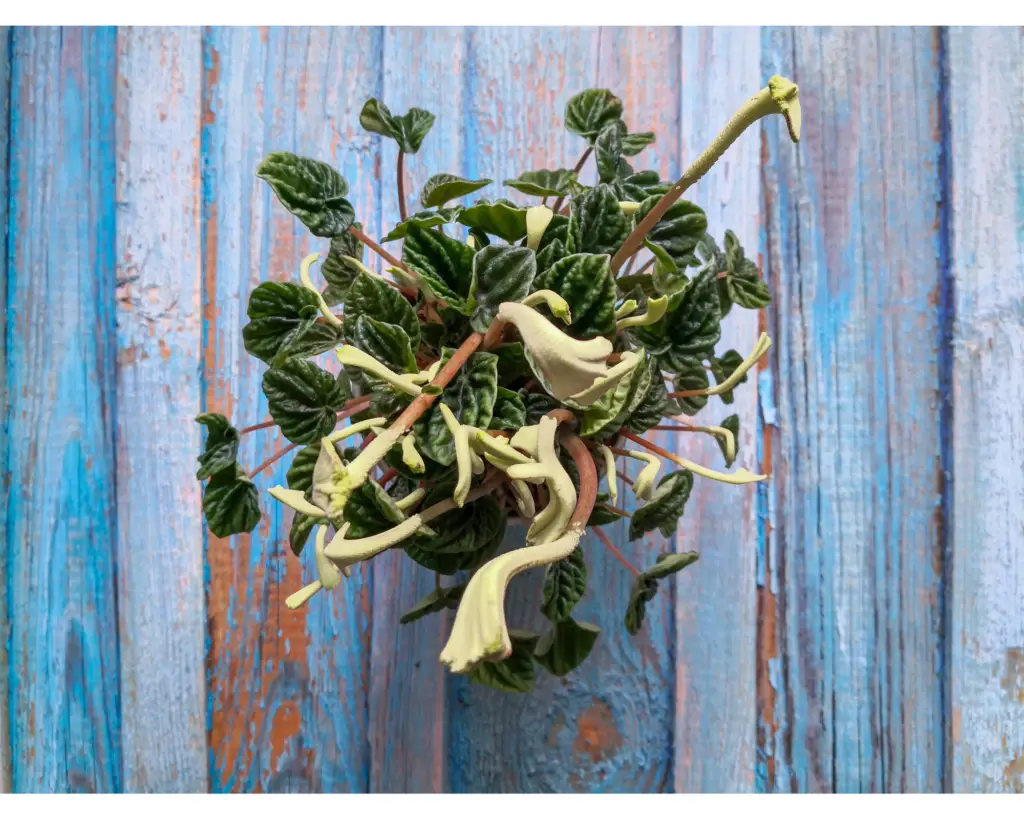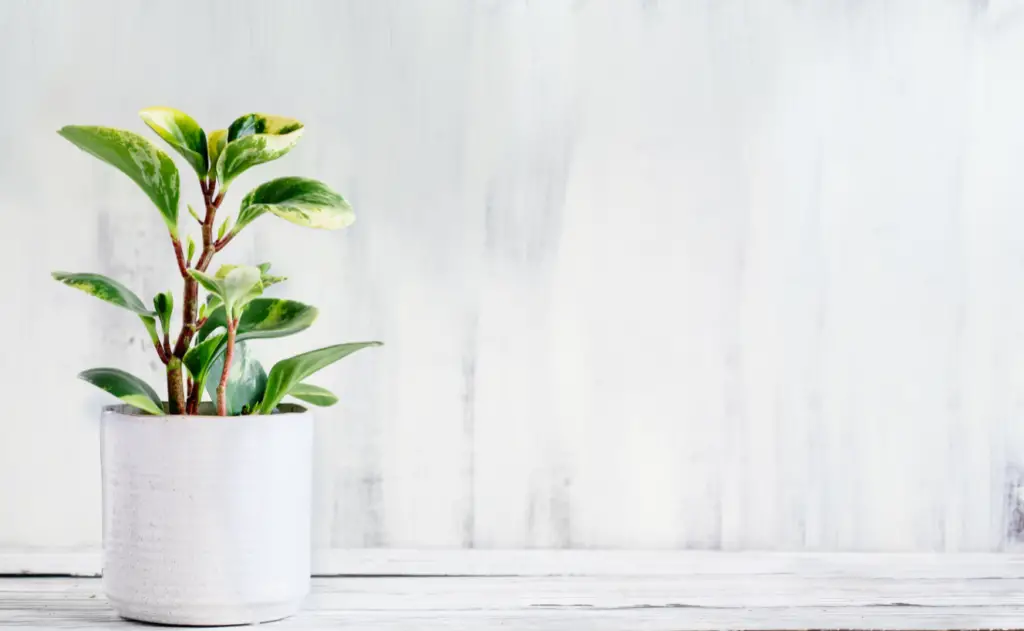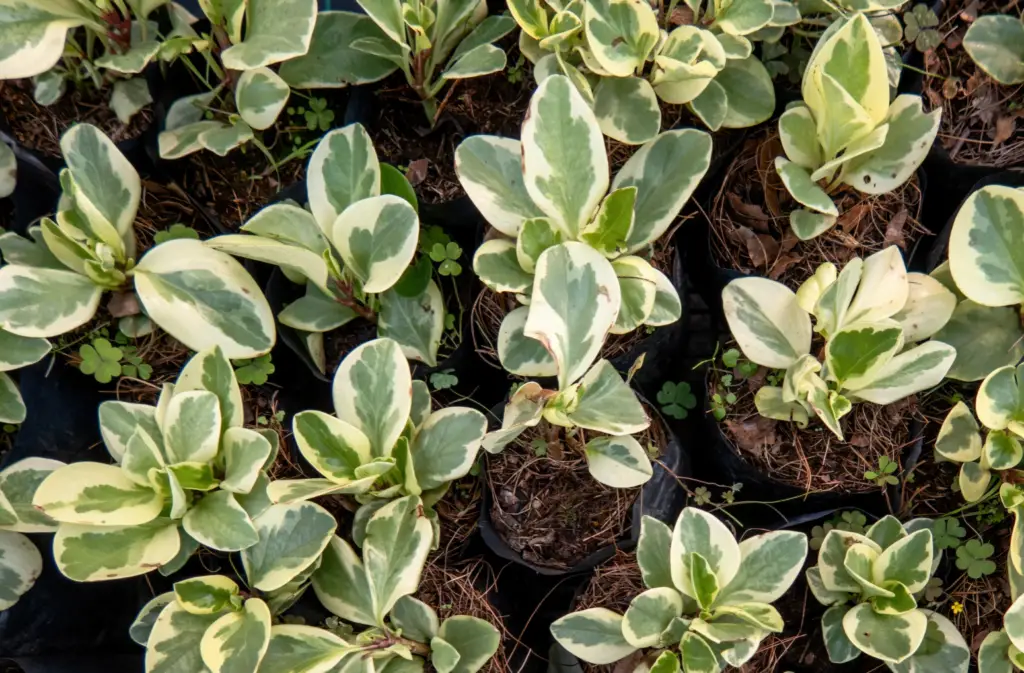Indoor plants are a great way to add some greenery to your living space, improve air quality, and reduce stress. There are countless options for indoor plants, each with their own unique requirements and benefits. This article will discuss the radiator plant, its care requirements, and how to incorporate it into your home decor.
Table of Contents
What is a Radiator Plant?
The radiator plant (Peperomia obtusifolia ‘Variegata’.), is a genus of around 1,000 species of small, tropical plants native to South and Central America. They are found in a variety of environments, ranging from rainforests to deserts. Radiator plants are popular indoor plants because they are low-maintenance and come in many different leaf shapes, colours, and textures.

Benefits of Radiator Plants as Indoor Plants
There are many benefits to having a radiator plant as an indoor plant. Firstly, they are known for their air-purifying qualities. The radiator plant can help to remove harmful toxins from the air, improving the air quality in your home.
Another benefit of the radiator plant is its low-maintenance nature. Radiator plants are easy to care for and can survive in a range of conditions. Frequent watering is not required and these plants can tolerate low light conditions. They are ideal for those who are inexperienced or too busy to fully care for indoor plants. Radiator plants are also versatile in terms of placement. Radiator plants can be placed on a windowsill, desk or in a hanging basket. They are compact enough to fit into tight spaces and can be easily moved around if needed.
Light Requirements
Radiator plants prefer bright, indirect light, as direct sunlight can scorch their leaves. So it is best to keep them away from windows that receive a lot of direct sunlight. These plants do require some light to grow, and require natural lighting or near a bright artificial light source.
Temperature and Humidity
Radiator plants prefer warm temperatures, between 65-75 degrees Fahrenheit (18-23 degrees Celsius). They can tolerate temperatures as low as 50 degrees Fahrenheit (10 degrees Celsius). They also prefer a humid environment, so consider placing a tray of water near the plant or misting the leaves with water.
Watering
Radiator plants do not require frequent watering, it is best not to overwater, which can lead to root rot. It is best to wait until the soil is dry to the touch before watering, and then water thoroughly. Make sure the pot has drainage holes so that any excess water can drain out.
Soil and Fertiliser
Radiator plants prefer well-draining soil that is rich in organic matter. You can use a commercial potting mix or create your own by mixing equal parts peat moss, perlite, and vermiculite. Fertilise the plant once a month during the growing season with a balanced fertiliser.
Propagation
Radiator plants are easy to propagate through stem cuttings. Simply cut a stem with a few leaves and place it in water or moist soil. It will grow new roots and can be transplanted to a larger pot once it has established itself.


Pest control for radiator plants
Like all houseplants, radiator plants are susceptible to pests. The most common pests that can infest radiator plants include spider mites, mealybugs, scale insects, and aphids.
The first step in pest control for radiator plants is to identify the pest that is causing the problem. Different pests require different treatment methods, so it is important to know which one you are dealing with. Look for signs of infestation, such as webbing, sticky residue, or tiny bugs on the leaves and stems.
If you notice that your radiator plant has an infestation, isolate it from your other plants to prevent the infestation from spreading. You can move the plant to a separate room or area until the pest problem has been resolved. Wash the plant with a gentle soap and water solution and mix a few drops of dish soap with water. Also use a soft cloth or sponge to gently wipe the leaves and stems. Be sure to rinse the plant thoroughly to remove any soap residue.
If washing the plant does not solve the pest problem, you may want to try using an insecticidal soap. It is effective in controlling spider mites, mealybugs, and aphids. Follow the instructions on the label carefully and be sure to treat the plant in a well-ventilated area. Another natural pest control option for radiator plants is neem oil. Mix a small amount of neem oil with water and spray the plant thoroughly, to cover both the tops and undersides of the leaves.
If all other pest control methods have failed, you may need to resort to chemical pesticides. However, it is important to use these with caution, as they can be toxic to both plants and humans. Choose a pesticide that is labeled for use on houseplants only and follow the instructions carefully. Be sure to wear gloves and a mask to protect yourself while using the pesticide.
Incorporating Radiator Plants into Your Home Decor
Radiator plants are versatile indoor plants that can be incorporated into a variety of home decor styles. Here are a few ideas:
- Hanging Baskets: Radiator plants look great in hanging baskets, which can be suspended from the ceiling or mounted on the wall. This is a great option if you are short on floor space or want to add some greenery to an area that doesn’t receive a lot of natural light.
- Bookshelf Decor: A radiator plant can be a great addition to a bookshelf or other display area. Place it next to some books or other decorative items for a pop of colour and texture.
- Windowsill Accents: If you have a windowsill that receives some natural light, a radiator plant can be a perfect accent. Choose a plant with colorful leaves or interesting texture to add some visual interest.
- Desk Companion: Radiator plants are small enough to fit on a desk or table, making them a great option for a home office or study area. They can help to purify the air and add some natural beauty to your workspace.
- Bathroom Greenery: Radiator plants can thrive in a humid environment, making them a great addition to a bathroom. Place one on a shelf or in a hanging basket for a spa-like touch.
- Terrariums: Radiator plants can be incorporated into terrariums or other miniature gardens. This is a fun DIY project that can be customised to your personal style and can be displayed on a tabletop or shelf.
- Living Wall: If you have a larger living space, you may want to consider creating a living wall with radiator plants. This involves mounting the plants on a vertical surface, such as a wall or fence, and allowing them to grow vertically. This can create a stunning focal point and add some natural beauty to your home.
Overall, there are many ways to incorporate radiator plants into your home decor, from hanging baskets to living walls. Consider your personal style and the layout of your living space when deciding placement of your plants.
Conclusion
Radiator plants are a great choice for indoor gardening, as they are easy to care for, attractive, and can provide many benefits to your living space. These plants can help to purify the air, reduce stress levels, and even boost your mood. Radiator plants can be susceptible to pests, which can cause damage to the plant and even kill it if left untreated. It is therefore important to practice good plant care to prevent pest infestations from occurring in the first place.
With proper care and attention, radiator plants can thrive and provide a beautiful and healthy addition to your home decor. Whether you are a plant enthusiast or a beginner, radiator plants are a great choice for anyone looking to add some natural beauty and benefits to their indoor living space.
